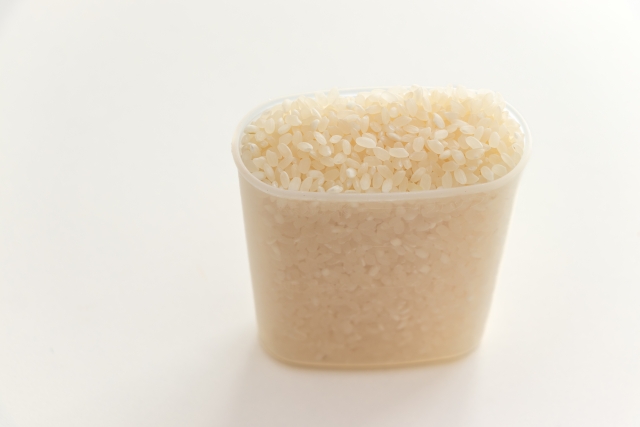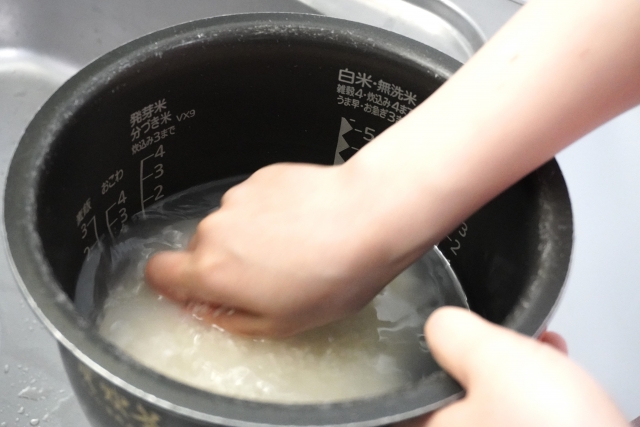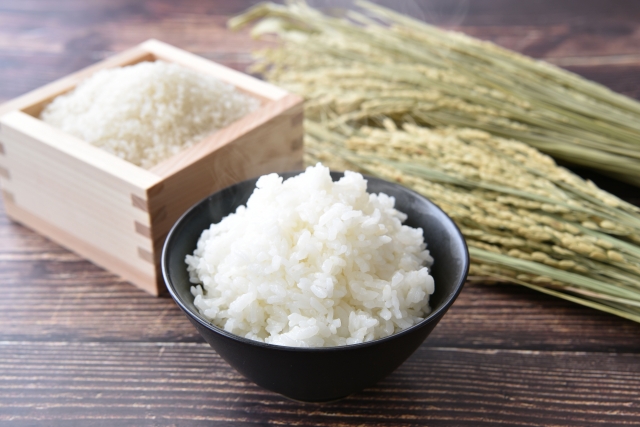Rice is a staple in Japanese cuisine, and it’s such an essential part of daily meals that people often debate: “Are you a rice or bread person in the morning?” Japanese rice, or white rice, pairs perfectly with a variety of dishes – from a simple bowl served with miso soup to curry, stew, or as the base for donburi (rice bowl dishes).
Today, we’ll go over the steps to cook fluffy, delicious rice, just as it’s enjoyed in Japan. With a few essential tips, you’ll be able to cook the perfect bowl of rice at home. Let’s get started!
Step 1: Measuring – The Foundation of Perfect Rice

First things first: measure your rice accurately. In Japan, the standard measure for rice is called a gō, which is approximately 150 grams. While you can use a measuring cup, we recommend using a kitchen scale to get precise measurements. This accuracy will ensure the best texture and taste.
Tip: Correctly balancing the amount of rice and water is essential for delicious rice!
Step 2: Rinsing the Rice – Be Gentle

Next, rinse the rice to remove excess starch, which can make the cooked rice sticky. Here’s how to do it:
- Place the rice in a bowl and add water.
- Gently swish your fingers through the rice, being careful not to break the grains. Drain and refill the water 2–3 times until the water is mostly clear.
Note: With modern milling technology, you don’t need to scrub the rice hard. Just gently swirl it with your fingertips a few times, and that should be enough.
Step 3: Water Ratio – The Golden 1:1.4 Rule
After rinsing, it’s time to add water. The recommended rice-to-water ratio is 1:1.4. For one gō of rice (150 grams), you’ll need 210 milliliters of water. Adjust this slightly based on your preference: a bit more water for softer rice, a bit less for firmer rice.
Pro Tip for Foreign Readers: If you’re using a rice cooker, the inner pot often has measurement lines, which make it easy to add the right amount of water.
Step 4: Soaking – The Secret to Fluffy Rice
Soaking the rice allows it to absorb water evenly, resulting in a fluffier texture when cooked. Let the rice soak for 30 minutes in summer or 1–2 hours in winter. If possible, use cold water for soaking – it improves the texture and shine of the rice. For an added benefit, place the rice in the fridge with cold water, which helps to preserve it longer and enhances the texture.
Tip: Soaking in cold water gives the rice a glossy finish and a slightly chewy texture, which many people find appealing.
Step 5: Cooking – Use the “Quick Cook” Setting for Best Results
If you’re using a rice cooker, select the “Quick Cook” or “Fast” setting after soaking. This option preserves the fluffy texture and saves time. If you’re cooking on the stovetop, you can easily replicate the same effect with a pot.
How to Cook Rice on the Stove: Place the lid on the pot and heat over medium-high until the water begins to boil. Once it boils, reduce to low heat for about 10 minutes, then turn off the heat. Leave the pot covered and let it steam for another 10 minutes.
Step 6: Steaming – An Important Step for Fluffy Texture
Steaming is essential for achieving the perfect texture. Allowing the rice to rest with the lid on for 10–15 minutes ensures the water is evenly distributed throughout the grains. Rice cookers handle this step automatically, but if you’re using a pot, make sure to keep the lid closed for this steaming period.
Important: Do not open the lid during steaming, as this lets the steam escape, resulting in less fluffy rice.
Step 7: Serving – Fluff the Rice Before Serving

Finally, it’s time to serve! Before you scoop the rice out, use a rice paddle to fluff it by gently turning the rice over from the bottom of the pot. This releases excess moisture and keeps the rice grains from sticking together. When serving, be careful not to press down with the paddle – instead, lift and gently place the rice in a bowl to keep it light and airy.


Leave a reply